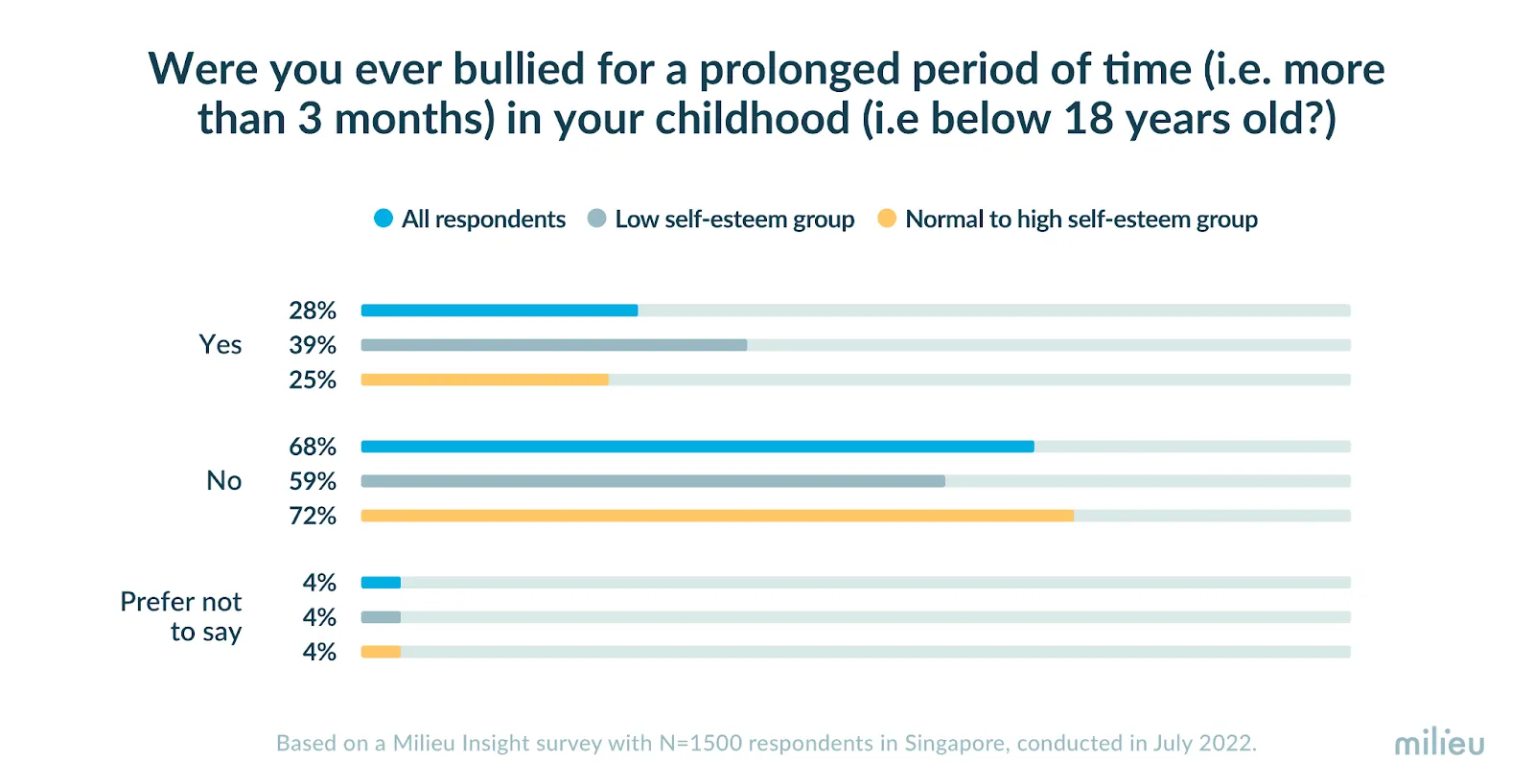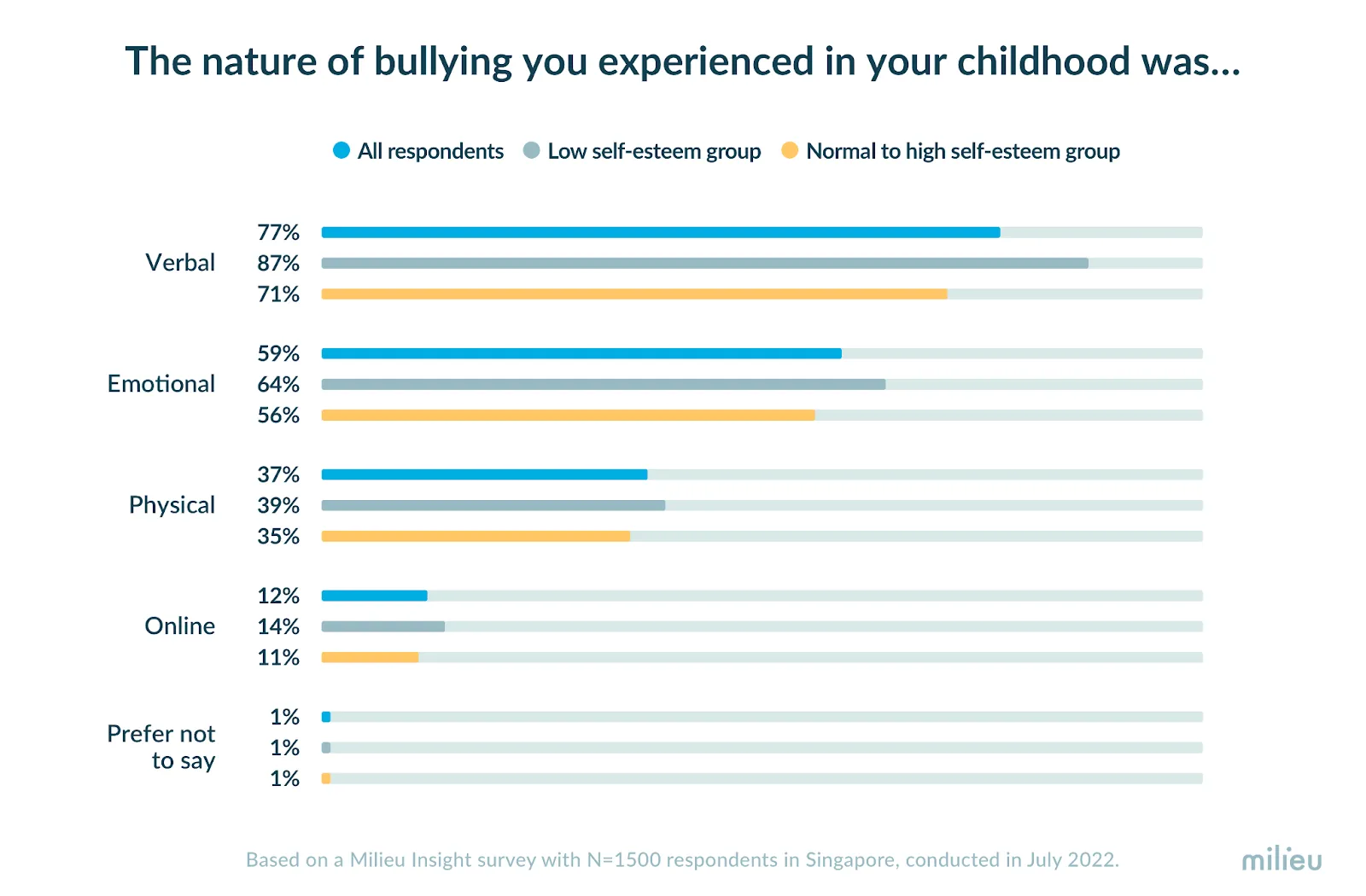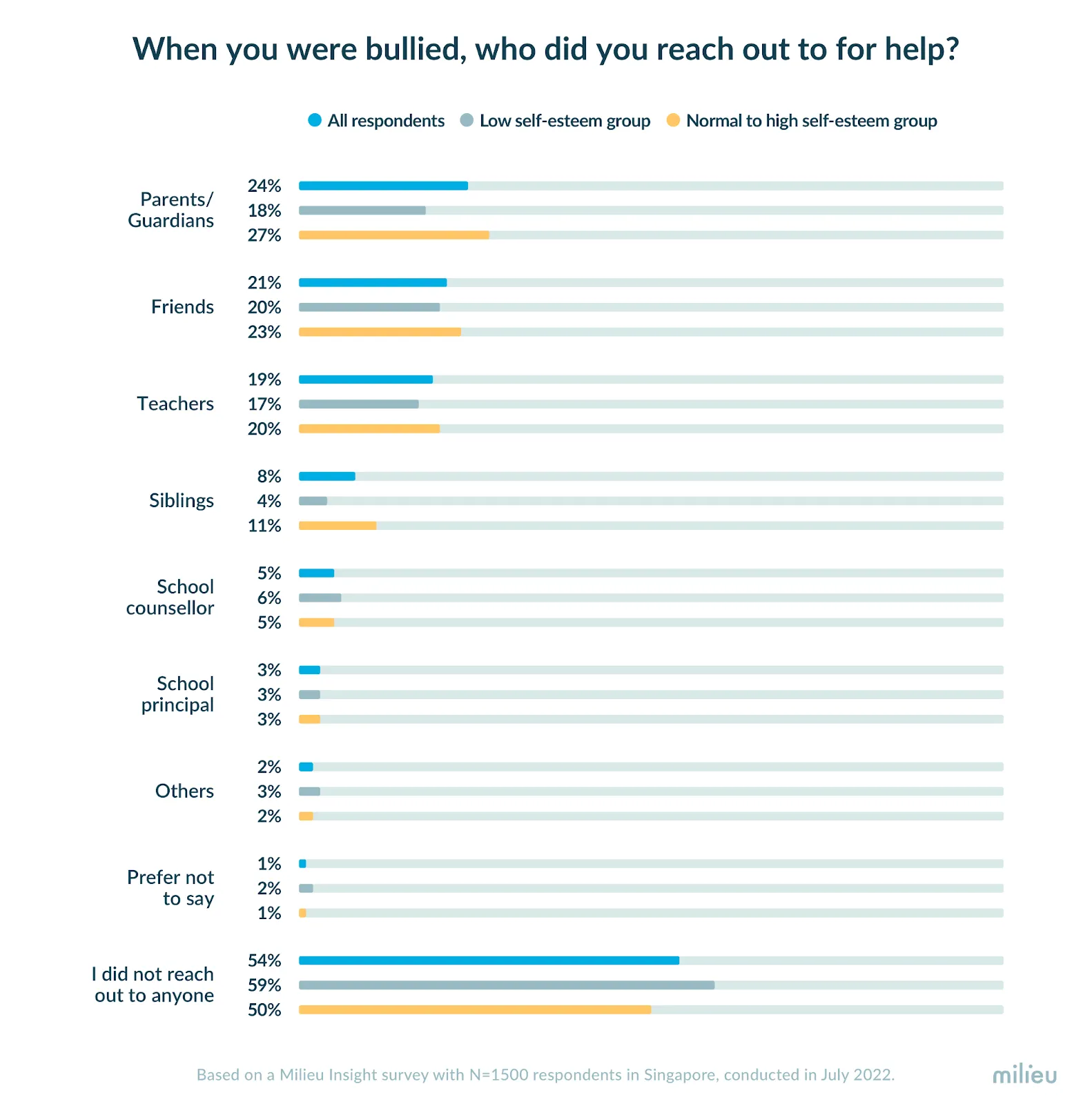Bullying tied to lower self-esteem in SG

Bullying among children is often brushed off as “just kids being kids”, but is it really?
A survey in 2020 found that there are 2 and 5 bullying incidents reported per 1,000 primary and secondary school students respectively in Singapore. However, victims often remain silent due to fear of retaliation, shame or even not being able to recognise their experiences as bullying behaviours. Children’s exposure to the Internet also makes it ever more challenging for adults to supervise their activities with their peers.
We conducted a survey with N=1500 respondents in Singapore to find out how childhood bullying experiences correlates with their self-esteem in adulthood. Part of the study used the Rosenberg Self-Esteem Scale, which is a 10-question assessment that measures self-worth by measuring positive and negative feelings about one self. Each question is answered using a 4-point Likert scale ranging from strongly agree to strongly disagree, and each option is accorded a score from 0 to 3. The scores across the 10 questions are summed up to assess the self-esteem levels of respondents. Another part of the study included questions about bullying.
After samples were collected, respondents were categorised into 2 groups:
- Low self-esteem group: The respondents that scored below 15
- Normal to high self-esteem group: The respondents that scored from 15 to 30
Higher incidence of childhood bullying among respondents with low self-esteem
A breakdown of the data found that the low self-esteem group are more likely to have experienced childhood bullying (37%) than the normal to high self-esteem group (25%).

Among those who had experienced childhood bullying, verbal bullying is the most common form of bullying (77%). A comparison between the two groups showed that people who reported having low self-esteem are also more likely to have experienced verbal bullying (87%) compared to people with normal to high self-esteem (71%).

These were a few of the most common experiences that childhood bullying victims experienced:
- Teasing or being made fun of (77%)
- Name-calling (62%)
- Being ostracised (51%)
More than half of childhood bullying victims did not reach out to anyone for help; 28% of those who did so did not receive help
Among the low self-esteem group, 59% said that they did not reach out to someone for help, higher than the normal to high self-esteem group (50%). Among those who did, they usually approached their parents/guardians (24%), friends (21%) and teachers (19%).

The survey revealed a concerning finding that among those who reached out for help, nearly 3 in 10 (28%) said that the parties whom they approached did not help them cope with the situation. This appears to be more common among the low self-esteem group, 40% of which did not receive help compared to 22% among the normal to high self-esteem group.

Early intervention is key
While a causal relationship cannot be established from this survey, the impacts of bullying have been studied and found to linger during adulthood - for both bullies and victims. Bullying is not simply a phase that children grow out of, but a learned behaviour based on “observed behaviors, experienced social pressures and engagements, and complex emotions that culminates into targeted aggression towards others”. Whether it’s child banter or bullying, it’s a fine line that adults have to be watchful for and be ready to intervene.

Author
Tan Yan Rong
Latest Insights

.avif)


.webp)

